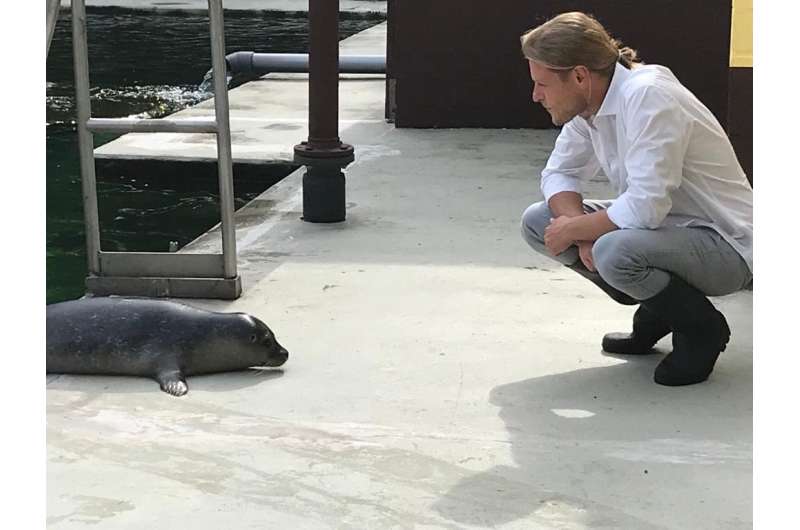Baby seals show off vocal skills

Humans appear to be one of the only animals capable of speech, which requires a range of skills and mental abilities. Among them, vocal learning—the ability to learn to produce new sounds—is critical for developing language. Only a handful of animals possess this trait, including humans, bats, whales, seals, and elephants.
However, simply possessing the ability to create new sounds is not enough to unlock language. Studying whether animals possess additional language-related skills can help us understand what it takes to learn speech and reveal the history of its evolution.
Andrea Ravignani of the Max Planck Institute for Psycholinguistics will discuss his work linking vocal learning with vocal plasticity and rhythmic capacity in his session, “Vocal learning, chorusing seal pups, and the evolution of rhythm.” The presentation will take place Dec. 9 at 9:50 a.m. Eastern U.S. in Grand Hall A, as part of the 183rd Meeting of the Acoustical Society of America, running Dec. 5–9 at the Grand Hyatt Nashville Hotel.
Ravignani and colleagues studied seal pups’ vocal plasticity, or how well they can adjust their own voices to compensate for their environment. They found that seal pups can change the pitch and volume of their voices, much like humans can. The ability to change volume is common, but changing pitch, or fundamental frequency, is rare in animals.
“Seals may have this capacity due to convergent evolution: vocal plasticity may be a trait which evolved independently in multiple lineages due to similar evolutionary pressures,” said Ravignani. “For the case of humans and seals, plasticity and vocal learning may be associated with either advanced breathing control or singing abilities in both species.”
The team also tested the ability of seal pups to identify rhythmic sounds using recordings of other seals. They altered some of those recordings by changing tempos and adding rhythms to see how the young seals would react. Seal pups paid significantly more attention to recordings with regular rhythms and fast tempos.
“We can conclude that very young and untrained seals can discriminate between other seals’ vocalization based on their rhythmic properties,” said Ravignani. “Another mammal, apart from us, shows rhythm processing and vocalization learning; perhaps these two skills coevolved in both humans and seals.”
Citation:
Baby seals show off vocal skills (2022, December 9)
retrieved 9 December 2022
from https://phys.org/news/2022-12-baby-vocal-skills.html
This document is subject to copyright. Apart from any fair dealing for the purpose of private study or research, no
part may be reproduced without the written permission. The content is provided for information purposes only.
For all the latest Science News Click Here
For the latest news and updates, follow us on Google News.

